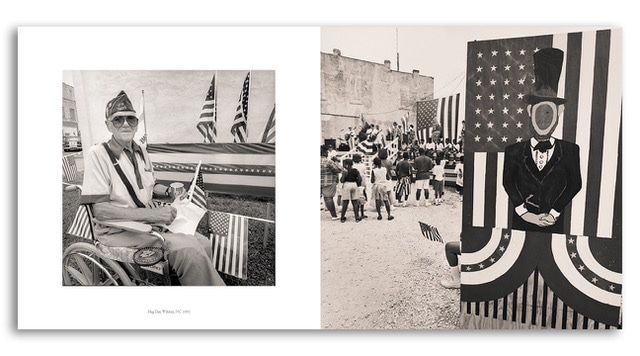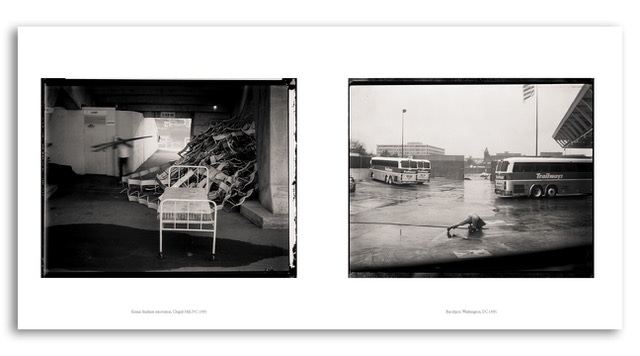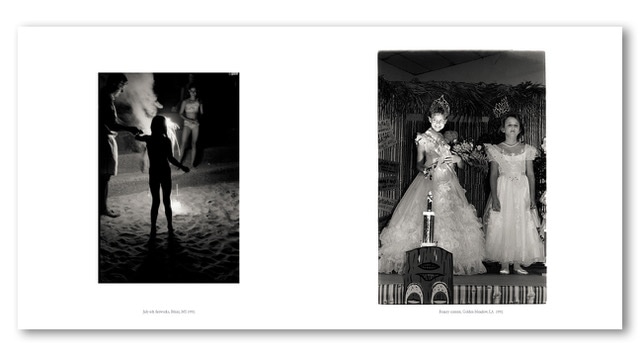Introducing BookLENS, a new interview series coordinated by PhotoNOLA’s PhotoBOOK Fair and published on NOPA’s online blog. Each month leading up to PhotoNOLA, we will bring you an interview with a photographer who recently authored a photography book of interest.
This month we bring you Bryce Lankard, one of the founding members of both the New Orleans Photo Alliance and the Click! Photography Festival in North Carolina. Renée Allie, interviewer, has served the New Orleans Photo Alliance starting as a member of the first Programming Committee and, most recently, as the 2018 and 2019 PhotoNOLA Reviewee Coordinator.
Renée Allie: So Bryce, I know you are one of the four people who started the New Orleans Photo Alliance; how did that come about? Who were the others and how did you all get together?
Bryce Lankard: My personal journey into New Orleans Photo Alliance was a long and sordid story, sparked by Hurricane Katrina. I was living in NYC and watching as Katrina unfolded, and I found myself wondering who I knew in New Orleans that would struggle with the consequences. Quickly I realized that my old friend and mentor David Richmond was a prime candidate. I immediately tracked down where David had evacuated to and made travel plans to meet him in Texas, then we reentered the city and tried and save his life and archives. Sadly this effort mostly failed. Most of his work was flooded and ruined and he personally suffered a breakdown as a consequence. He never fully recovered. This took a heavy emotional toll on me, and thanks to some advice I got from Amy Wilson, a social worker and old friend, I was able to redirect my energies. I realized that not only David, but countless photographers throughout the Gulf Coast had lost so much. I had an idea that I could create something that could help that whole community. I moved back to NOLA permanently and sought advice. I talked to the New Orleans Arts Council who suggested I talk to my peers about the needs of the community. I did… George Long thought the idea of starting such an organization was crazy, Don Marshall had a similar idea, but had his hands full with the Jazzfest foundation. I kept reaching out to photographers I knew and found a select handful of folks that were committed to this community and willing to do the work. Those first four were Owen Murphy, whose long history in NOLA includes the Photo Exchange, a co-op that David Richmond had also helped establish in the 1970’s, Michel Varisco, a wonderful artist and dedicated teacher, and Jen Shaw, another great artist and teacher, who was the visionary behind what is now the PhotoNOLA festival. We all started meeting in coffee shops and hatched this idea, and that became a kind of movement and grew into what is now the New Orleans Photo Alliance.

Renée: You’ve made a few books now; what do you look for in a publishing platform? What have been some of the best experiences? What are some of the pitfalls?
Bryce: I am admittedly kinda old school. I was stuck in the idea for a long time that some big publisher like Taschen would call me up and want to finance printing some big monograph of my work, Pipe dreams in our current reality. There is also now the more common format of the “pay to play” model, which works fine for some people. I am a big fan of the singular image, but I am also keen on concepts that are conceived as a book. It is a different form of expression that includes sequencing, design, text and so on. And if that is your idea of your work, then make that book, by any means. It can be a one-of-a-kind, handmade object or a small run by one of the many self-publishing platforms now available. The right choice is the one that matches your goals for the project. I wouldn’t call them pitfalls, but you do have to make choices on the limited materials each publisher offers, the price point, and the responsibility is on the artist to manage the reproduction and quality and integrity of the printing. That usually means getting a few test runs to check on the accuracy of the finished product.
Ironically one of the best experiences I had with a publisher was at the very beginning of NOPA. This was at the very beginning of the publishing on demand industry and I was still living in NYC, I had yet to move back to New Orleans full time. I was putting together a benefit exhibition in Tribeca to raise some funds for the NOPA idea, but I wanted to create something that folks could purchase that was cheaper than a print. I found this publisher in San Francisco and while I was designing the book, somehow they found out that it was for a Katrina benefit. They bent over backwards to offer me better materials, a bigger size, and more to help the cause. The book sold like crazy. Sadly that company went out of business, so I can no longer get any more copies of that original publication.

Renée: Are all of your books self-published? Are any of your past books still available?
Bryce: I suppose the answer is yes. I have made a handful of one-of-a-kind handmade books and they are not available. I also teach a class at the Center for Documentary Studies at Duke University, a summer intensive in which the students, in six days, create an 80-page book of their combined work. That is available on Lulu at cost. Of my own work, I do have the second edition of my benefit book on New Orleans called “Land of Dreams” available on Lulu. You can access that link on my website.
And my most recent book, a compendium to my retrospective show “Dead Reckoning” is also available via a link on my website. It is also printed by Lulu.

Renée: Tell me about your current book…what is it about? Where can someone buy it?
Bryce: I was honored that The Light Factory, in Charlotte, NC, offered me a retrospective show for “Dead Reckoning”, and they gave me WAY too much time to ponder the exhibition. I ended up doing a deep dive into my archives and determined that the story I wanted to tell would take more images than what would fit on the gallery walls. The book and exhibition is about the artistic journey. It is about the evolution of a creative voice. I purposefully used anchor images of mine that are more well known, but sprinkled in lots of widows and orphans… work that was important in terms of exploring new techniques, or subjects that were important to me personally, but none of which ended up in bigger projects. A friend of mine said it was about “the spaces in between”. I don’t think this will be a best-seller, but it was important for me to have a record to what I was trying to express.
It is available on my website. I have limited the run to 100 copies, each of which will be signed and numbered.
Renée: Do you have any plans for further books?
Bryce: I do. Now that I am over my old school ideas, I don’t think of the book as some unattainable concept. I have a lot of ideas that, in my mind, are best served as books. So I am looking at concepts and everyday it seems a new printer opens for business that offers more possibilities, so I look forward to matching those resources with the concepts I have.
Renée: Can we expect to see you at the PhotoNOLA PhotoBOOK Fair in 2021?
Bryce: Fingers crossed. Anytime I have even the flimsiest reason to come back to New Orleans, I try my best to make it happen.
